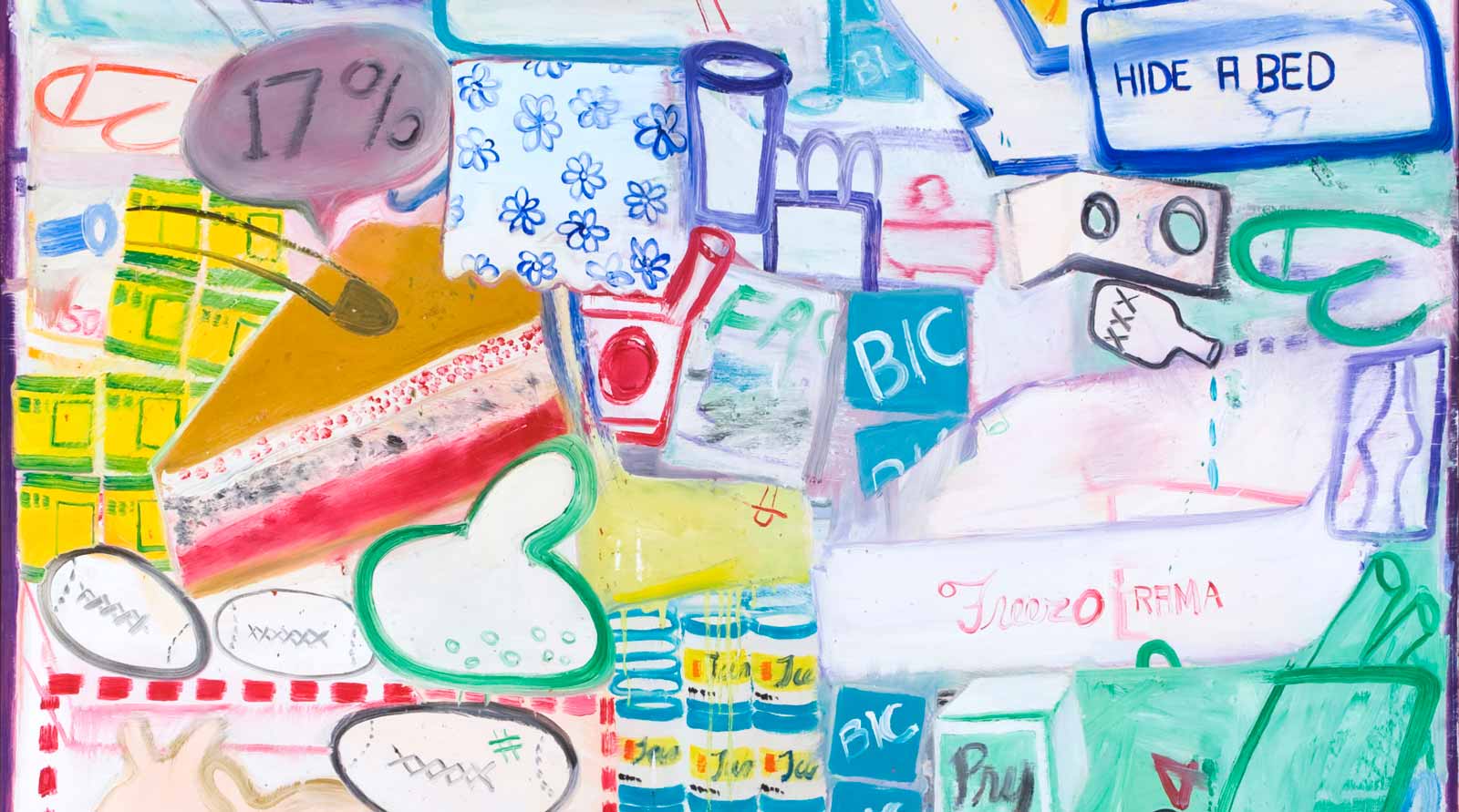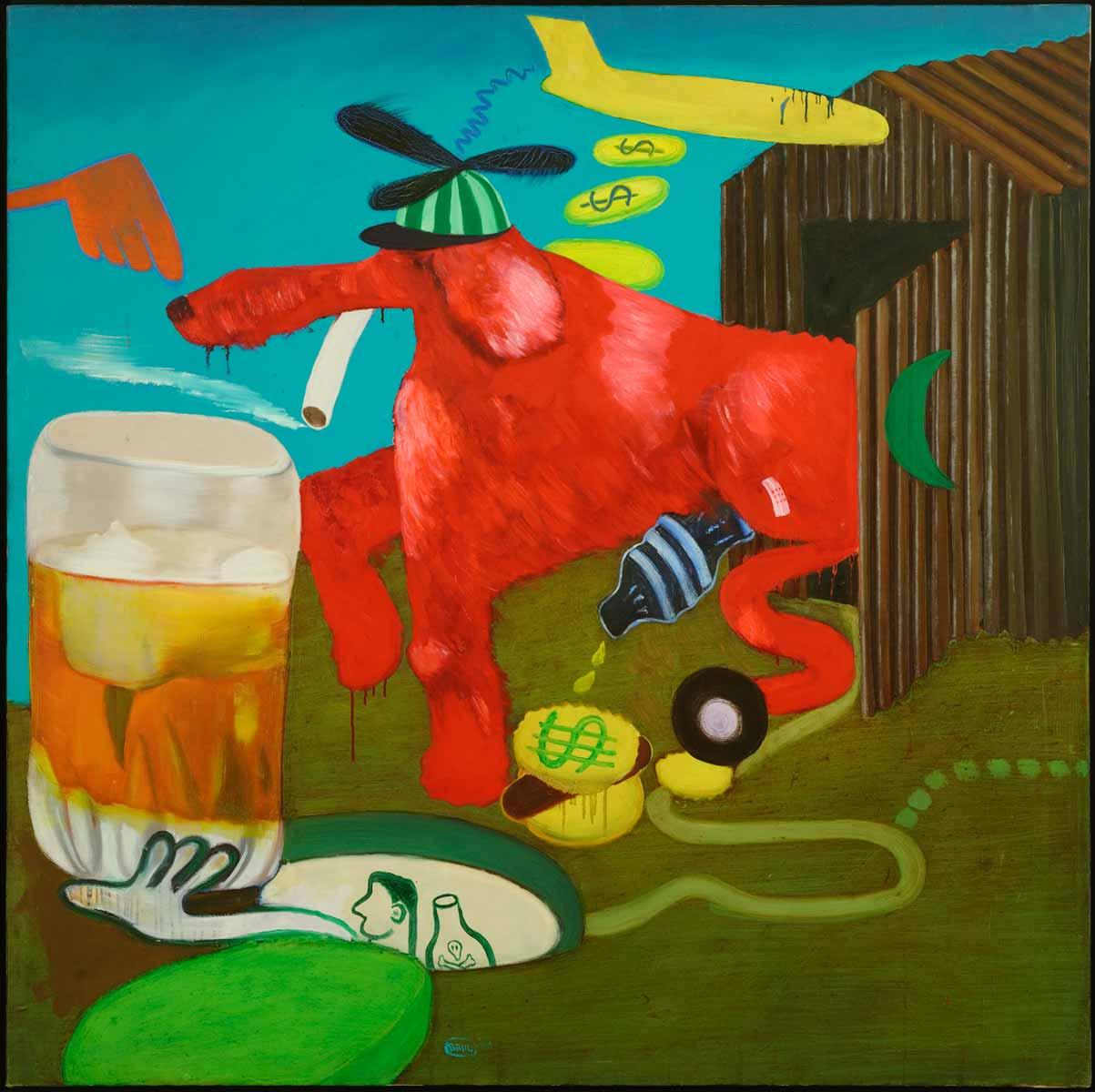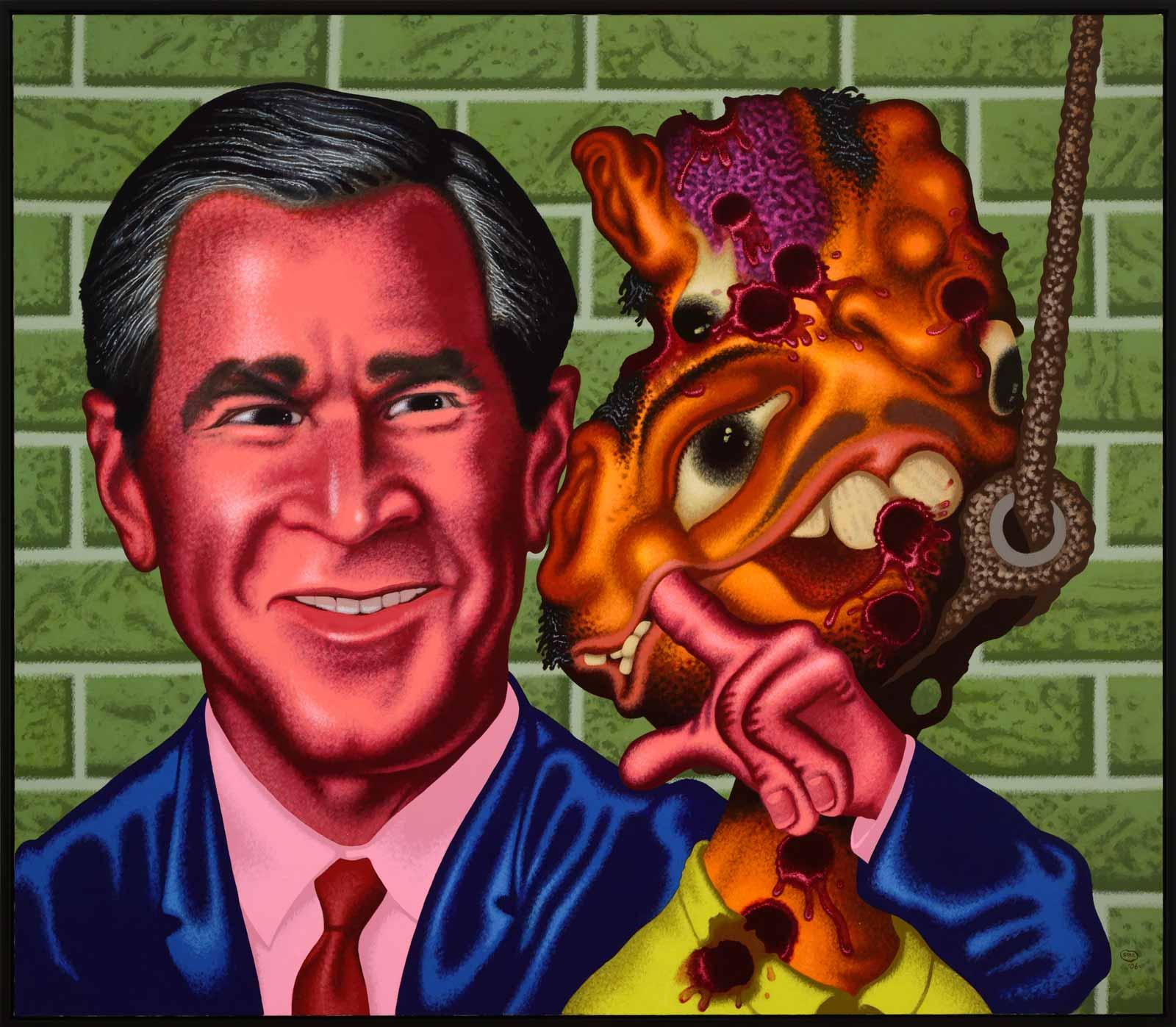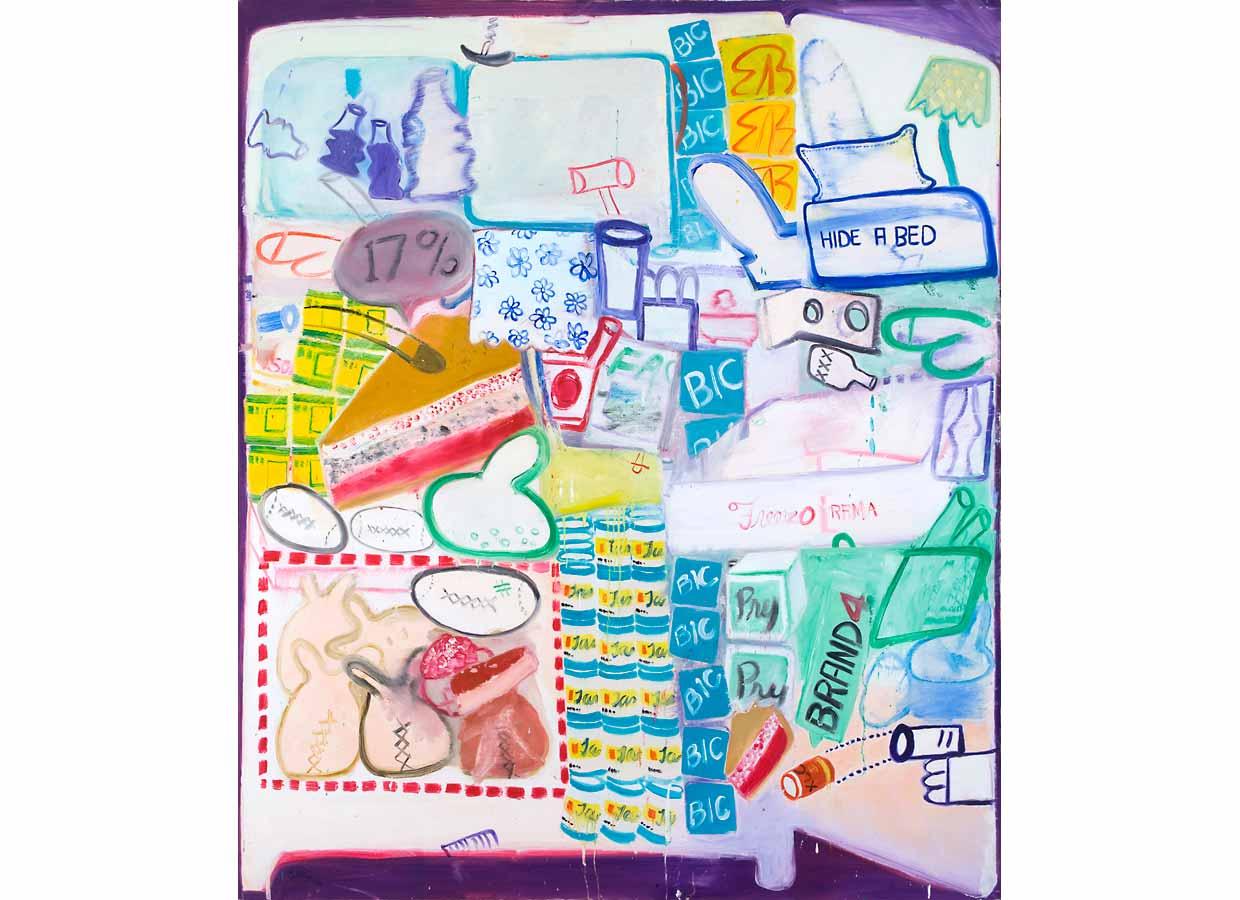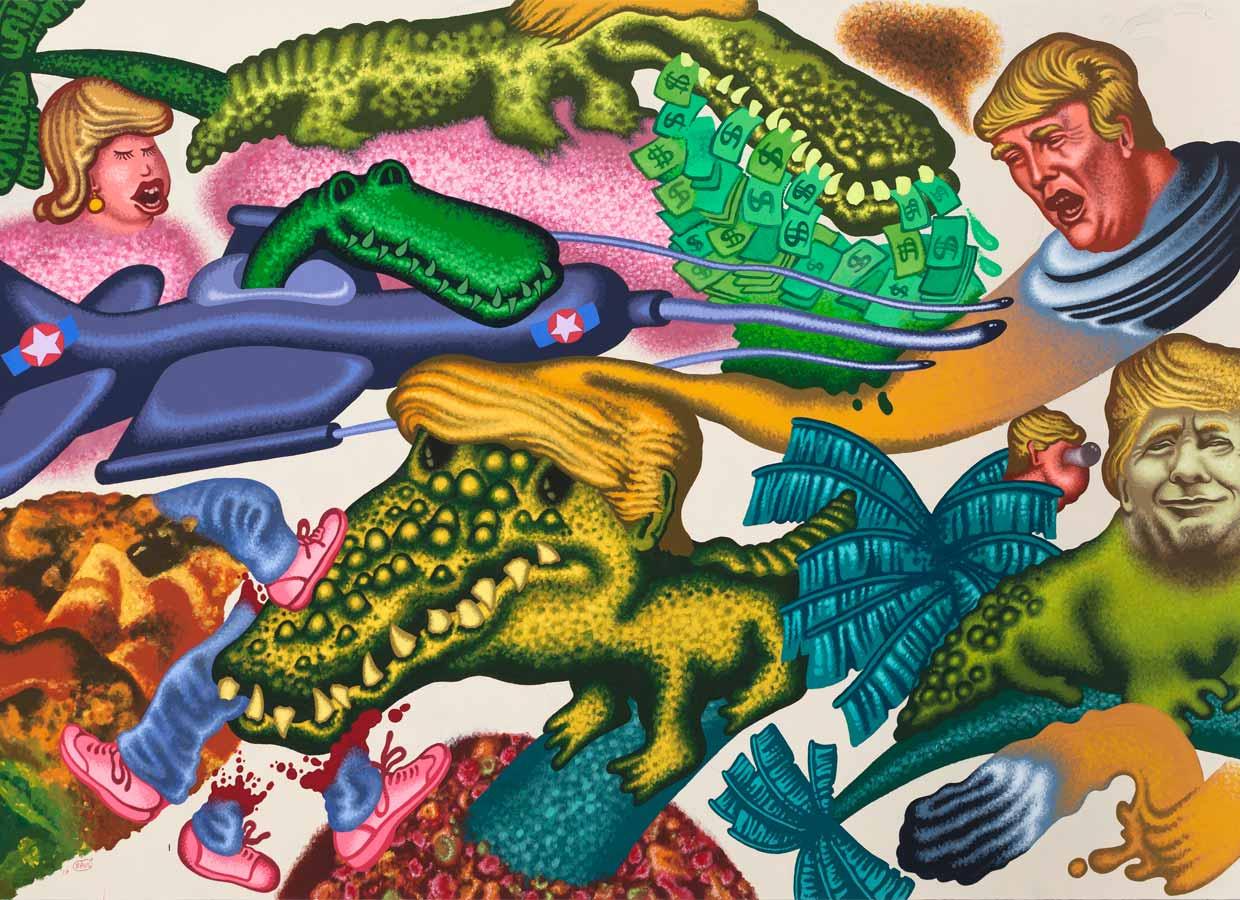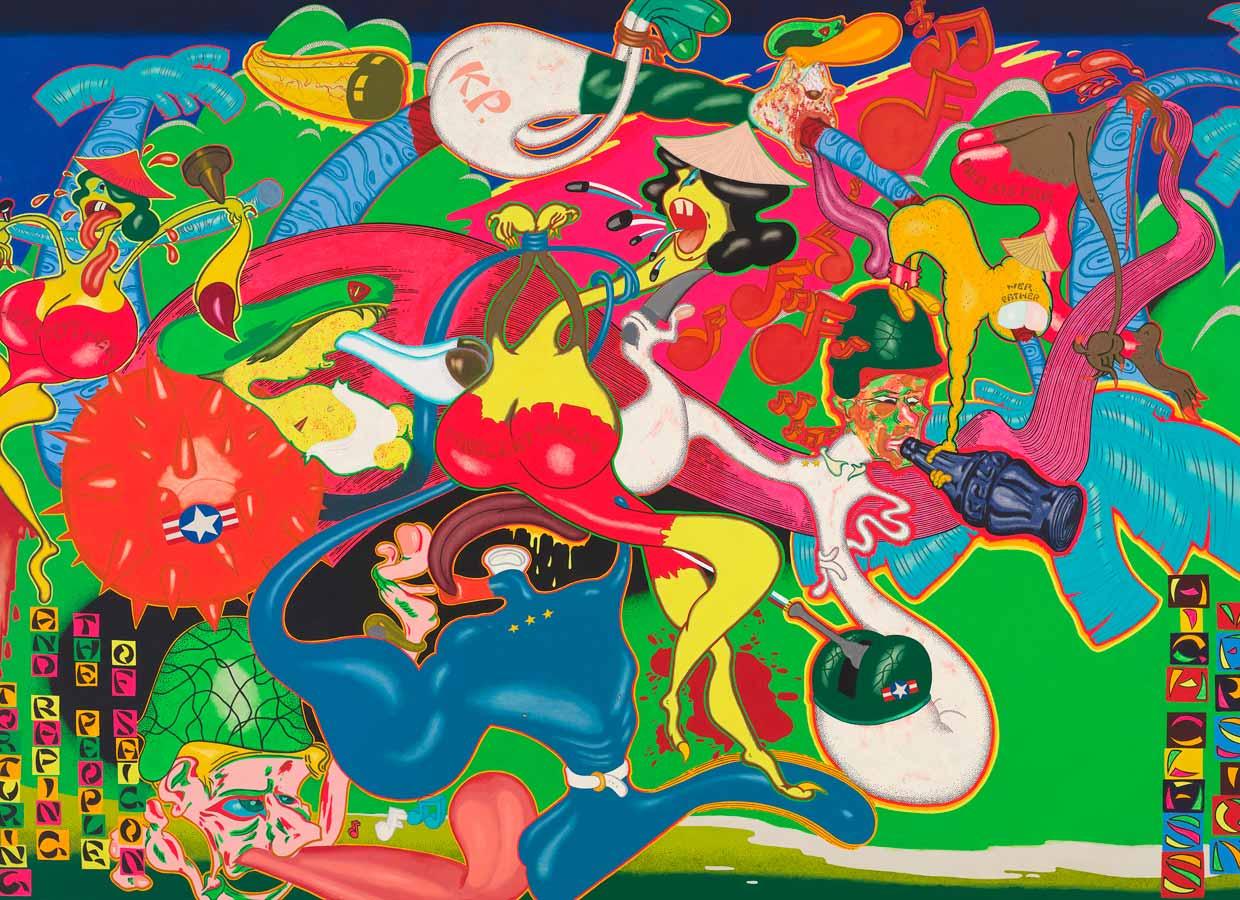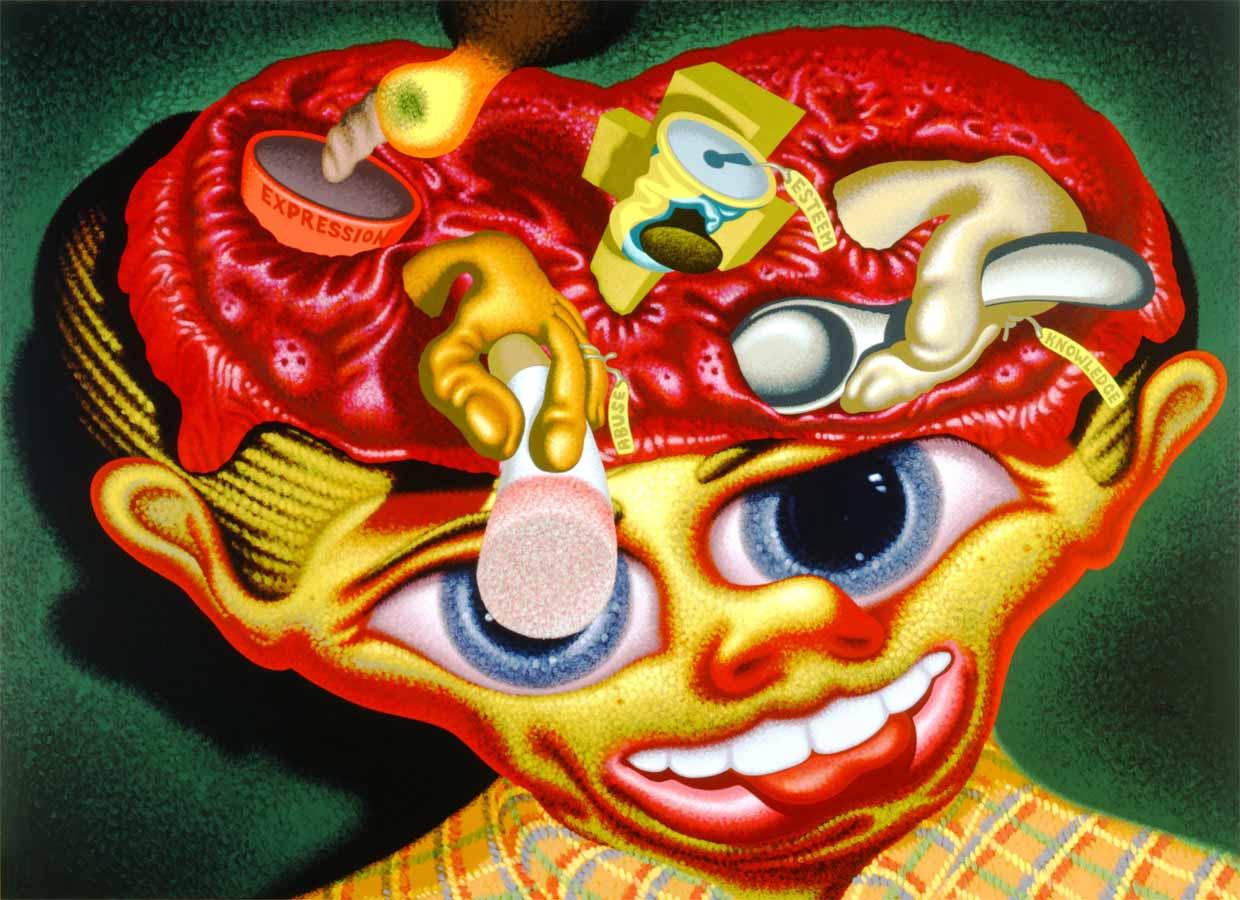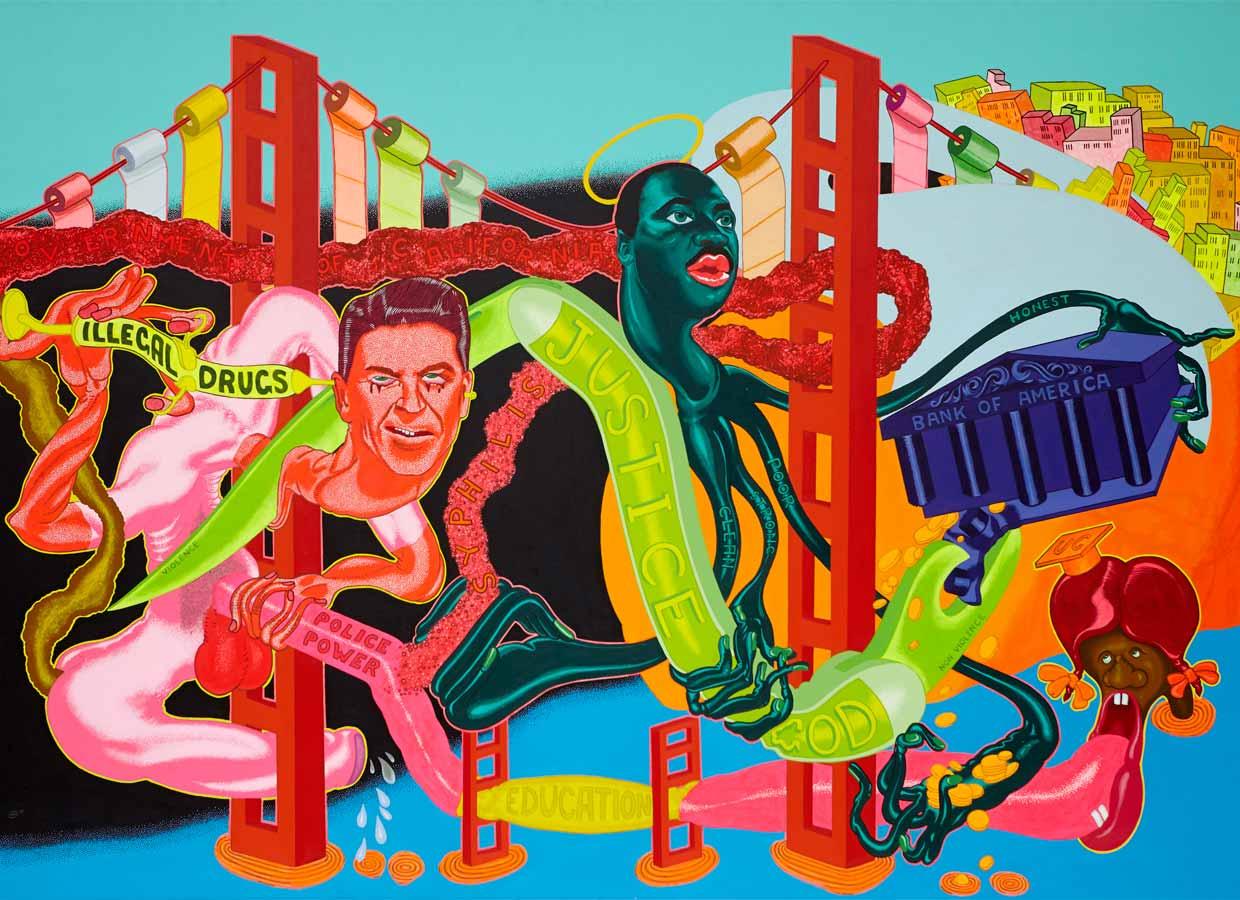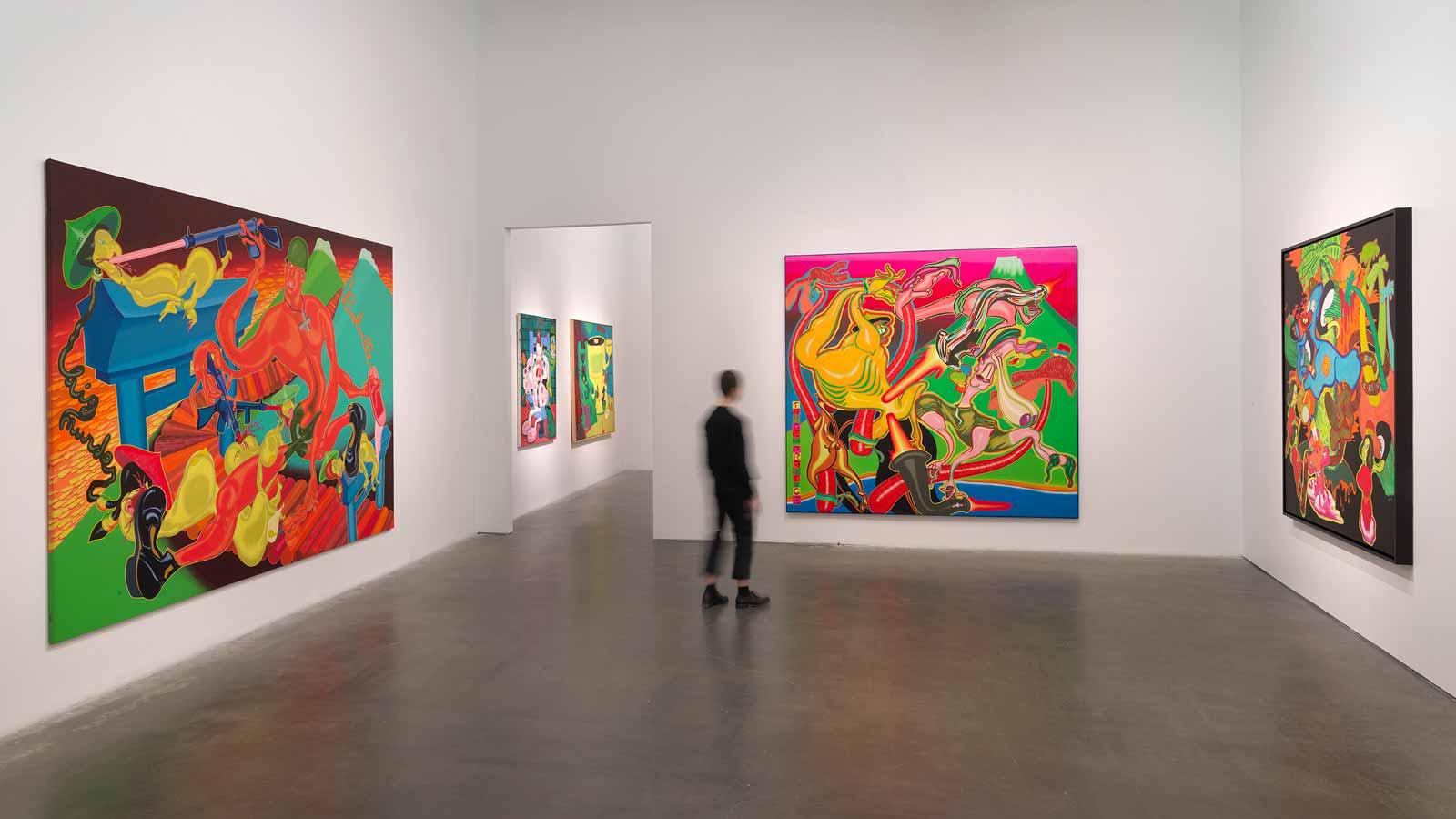When the 86-year-old artist Peter Saul, who currently has a retrospective at the New Museum in New York, graduated from the Washington University in St. Louis in the mid-1950s he packed up and headed straight to Europe, but the luck that was awaiting him there would eventually turn the Pop Art precursor into a superstar back in America.
Living in Paris in 1960, he was introduced to the Chicago and New York art dealer Allan Frumkin by the Chilean modernist Roberto Matta, whom Saul had never met but to whom he had sent him some drawings after seeing his work. When Matta suggested Saul meet Frumkin in a bar of a hotel, the artist showed him his work, which the dealer bought and continued to acquire and show in his galleries for the next thirty-seven years.
When the support eventually ended, an expanded contemporary art world—one with a revisionist eye—was finally ready to fully embrace Saul’s powerful paintings and wildly wonderful works on paper.
Born in San Francisco in 1934, he was the only son of an oil executive and a secretary. Primarily brought up by a nursemaid, he was sent off to a strict boarding school in Canada at age ten, which helped shape the life-long rebel he would become. Smart, but awkward as a youth, he graduated high school at age fifteen and quickly decided that an office job was not for him.




